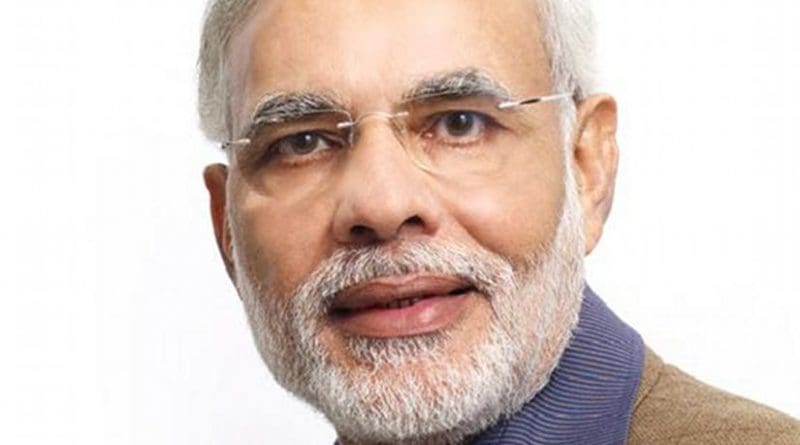Bill Gates’ Skepticism About Renewable Energy And Modi’s Target Of 175 GW By 2022 – OpEd
Even the pledged admirers of Bill Gates, widely acclaimed as the greatest innovator and philanthropist of present time, would be surprised to know about the cynicism of Bill Gates on the potential benefits of renewable energy for saving countries like India from an impending energy crisis and to provide the ecological gains to mankind by ensuring reduction in use of fossil fuel (coal, oil, natural gas), that cause global warming.
On careful reading of the speech of Bill Gates, his admirers may give him the benefit of doubt, and state that he was just thinking aloud and even before crystallizing his thoughts, he blurted out his views in premature manner. There is no doubt that the negative views of Bill Gates on renewable energy are ill advised and certainly is not in tune with reputation that he commands.
At the same time, it is gratifying to note that Indian Prime Minister Narendra Modi has fixed renewable energy target of 175 GW for the year 2022, during his recent speech in the Paris Climate Conference.
Given the past experience in India of fixing the target and not achieving them even half way on several occasions, many people may suspect that the Prime Minister may be unreasonably ambitious. Perhaps, those who admire Narendra Modi for his capability to think big and his habit of announcing tall targets in dramatic manner, may say that the Prime Minister has fixed target of 175 GW of renewable energy by 2022, with the objective of enthusing the countrymen to work towards such big target and work hard to achieve it. Probably, he has thrown the target as challenge for the Indian administrators, scientists and technologists.
However, a careful analysis of renewable energy potential in India would make it evident that such target of 175 GW is reasonable , much needed and well within the achievable capability of India.
Present scenario and the huge target:
The present scenario is that India has around 38,O96 MW of renewable power, consisting of wind power of 24,677 MW, solar power of 4579 MW, small hydro power of 4161MW, bio power of 455O MW and waste to power of 127 MW.
Given the target of 175 GW by 2022 and the present capacity of around 38 GW, India need to build renewable energy capacity of around 19 GW every year between 2016 and 2022. Is it possible ? It is possible, if Modi government would be able to pursue the task with great determination, focused attention, innovative approach and creation of appropriate public opinion in favor of such target.
By fixing the target of 175 GW of renewable energy by 2022, Narendra Modi has placed himself and his governance capability on trial.
India has the on shore wind power potential of around 103 GW .With around 7600 km of coastal line, India has the potential of around 350GW of offshore wind power.
India has the advantage in terms of higher solar radiation compared to countries such as Germany, USA, Japan, Australia, Italy, which have made significant progress in solar power segment in the recent years. Potential of solar power in India is as high as 5000 million kilo watt hour per year. Small hydro power potential in India is around 20 GW.
Obviously, Modi government has to largely rely on the capacity build up of wind power and solar power to achieve the target of 175 GW by 2022. It has fixed target of 100 GW of solar power by 2022.
Challenges ahead:
There are challenges ahead and obviously Narendra Modi must be aware of this daunting task when he fixed the target of 175 GW by 2022.
One MW of solar power capacity needs land area of around 5 to 7.5 acres. Similar extent of land area would be required for onshore wind power also.This means that more than one lakh acre of land have to be made available for building up around 19000 MW(19 GW) of renewable power capacity every year. Such land has to be acquired without disturbing agriculture farm holdings.
Of course, there are lakhs of acres of unused and wasted land available in the country and such land has to be identified and put to use for building up the renewable power projects. The suitability of the land for the purpose also need to be ascertained.
Another big challenge is the building up of grid capacity in tune with the capacity build up for renewable power, so that the generated power can be handled.
Building up of capacity of 19 GW per year and creating the required additional grid capacity will call for investment of around Rs.1,50,000 crores per year. As the year 2016 will commence in the next few days, we see a scenario where no provision has been made to have the necessary investment to build the envisaged renewable energy capacity every year.
There are other issues such as absence of any production capacity in the country for polycrystalline silicon, which is one of the essential input material for solar cell. One MW of solar power capacity would need 20 tonne of polycrystalline silicon.
Though some initial steps have been taken to build offshore wind power project in coastal region of Tamil Nadu and Gujarat, it is still in very preliminary stage.
Let the nation strive to achieve the target:
While one can say that Narendra Modi’s target is technically achievable and the doomsayers would very much doubt that the target can be achieved, the nation would be well advised to believe that target would be possible and it should strive towards achieving the target to the best of its ability, notwithstanding whatever may be the views of Bill Gates.

